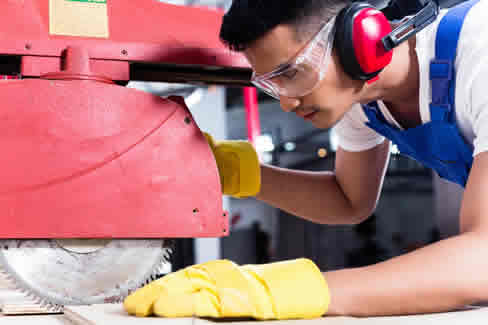No matter what industry you’re in, safety is key to maintaining a productive workplace. As an employer, you want to prevent harm from befalling your employees and, if applicable, your customers. By maintaining a safe workplace, not only will you shield your company from legal risks, you’ll also create a trusting culture where employees can work without becoming preoccupied about safety hazards. So, if you want to make safety a priority in your workplace, follow these four steps.
- Provide workers with safety information
Basic safety information should be readily available and easily accessible to employees at your company. Keeping safety information around will make it easy for workers to review the proper procedures and protocols in the workplace and promote an overall culture of safety.
The simplest way to provide your employees with safety information is to make it available on your company’s website or on their employee web portal. There you can provide them with access to PDF copies of safety manuals, handbooks, and FAQ sheets, along with training videos or even interactive safety exercises.
In addition to putting your company’s safety information online, you might also consider posting various safety policies and procedures on a board in the break room alongside physical handouts and leaflets.
- Screen potential new hires
Before making any candidate an official offer, it’s important that you screen them first. Screening potential new hires is a crucial part of maintaining a workplace that feels safe for everyone. After all, you need to have some idea of a candidate’s characters and abilities in order to make a fully informed hiring decision. If they have a problematic, or even violent, history then they may put other employees and the company itself at risk.
That’s why you should get a background report that can confirm a candidate’s identity, bring up their criminal records, and even check their employment history. In addition to a background check, you might also consider other screening methods, such as contacting a candidate’s references or administering a skills assessment.
A skills assessment is particularly important if they’re applying for a management job or one that requires a certain level of technical expertise. That’s because if you as an employer hire someone who’s incompetent and they’re responsible for an accident in which others are injured, you could possibly be legally or financially liable. So, protect yourself and your workers by doing your due diligence when hiring.
- Regularly inspect equipment
If your employees are working with malfunctioning equipment, an accident is bound to happen sooner or later. In addition to potentially causing injury, disability, and even death, faulty equipment often hurts productivity and poses a huge business risk.
In the case that one of your employees is seriously injured due to malfunctioning equipment, you as the employer could be held accountable. The injured employee may have grounds to take legal action against your company, meaning you could be on the line for a huge financial settlement.
That’s why you need to regularly inspect any equipment your company uses. When you find faults or malfunctions, take action on the issue quickly—switch out broken parts or even replace the equipment entirely if need be. The short-term cost for repairs and replacement will help your company stay productive and maintain a safe work environment.

- Place an emphasis on training
If you want employees who are responsible and informed when it comes to safety procedures, then it’s imperative that you establish a comprehensive training program for the onboarding process and beyond.
Across every industry, a large amount of jobs require workers to first learn company safety procedures and policies in case of an emergency. From the top down, everyone in your organization should be prepared in some capacity to deal with hazardous situations, whether this means knowing the proper way to clean up a spill or how to evacuate in case of a fire.
Training is especially important if the employees at your company are dealing with heavy machinery or potentially dangerous tools, where the risk of an accident taking place is higher than in other industries. In these cases, it might even be a good idea to set up a mentorship program where new hires are paired with more experienced employees who can give them personalized one-on-one training.
Keep these four steps in mind when designing safety policies for your company in order to keep both your employees and the company itself out of harm’s way.












